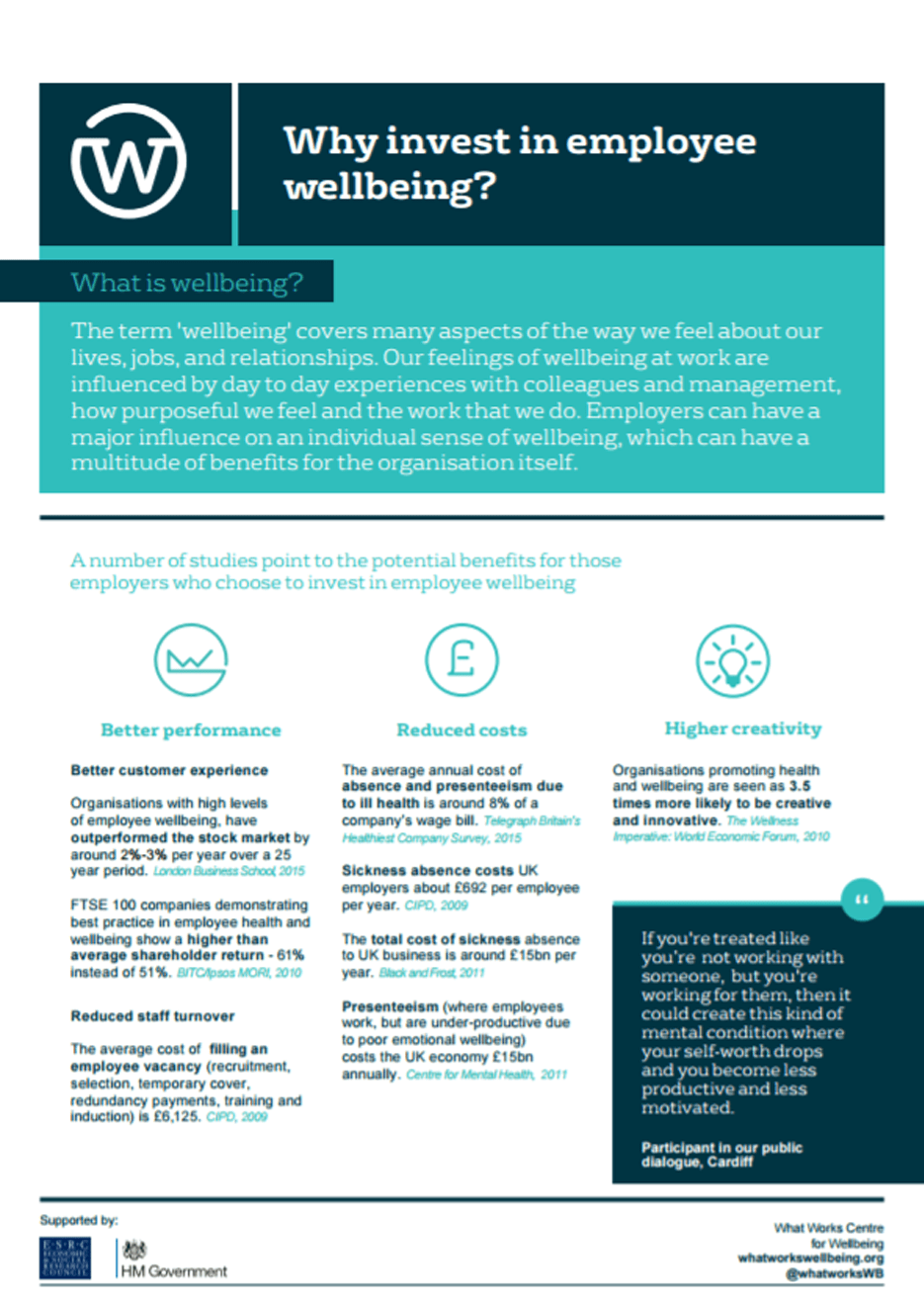Why Invest in Employee Wellbeing?
Downloads

Intro
This simple, clear factsheet outlines the evidence on why employers should consider employee wellbeing.
A number of studies point to the potential benefits for those employers who choose to invest in employee wellbeing.
 Better performance
Better performance
Better customer experience
Organisations with high levels of employee wellbeing, have outperformed the stock market by around 2%-3% per year over a 25 year period.
FTSE 100 companies demonstrating best practice in employee health and wellbeing show a higher than average shareholder return – 61% instead of 51%.
Reduced staff turnover
The average cost of filling an employee vacancy (recruitment, selection, temporary cover, redundancy payments, training andinduction) is £6,125

Reduced costs
The average annual cost of absence and presenteeism due to ill health is around 8% of a company’s wage bill.
Sickness absence costs UK employers about £692 per employee per year.
The total cost of sickness absence to UK business is around £15bn per year
Presenteeism (where employees work, but are under-productive due to poor emotional wellbeing) costs the UK economy £15bn annually.

Higher creativity
Organisations promoting health and wellbeing are seen as 3.5 times more likely to be creative and innovative.
What does ‘good work’ look like?
Good job design, strong leadership and efective management are key factors in ensuring the best outcomes for both the business and for employees.

What can employers do to create ‘good jobs’?
At an individual level
Train and support staff to improve their own job quality and wellbeing skills.
We found strong evidence showing the wellbeing benefits of training staff to improve their own job quality and wellbeing skills.
Help employees make their own work more interesting, use more skills, take more initiative, work flexibly, communicate better, develop resilience and build relations with co-workers.
At a team level
Train managers
Gallup research shows that 70% of an employee’s motivation is influenced by our manager.
Our research showed that while workplace leadership training yields mixed wellbeing and performance results, managers can improve wellbeing by finding out what staff see as important for improving the quality of their work.
To be most effective when carrying out improvements, managers can make sure changes are integrated with other business systems and staff know that the changes are being introduced for their own health and wellbeing.
At an organisational level
Assess your policies
We found promising evidence that it is good for an organisation to integrate improvements to quality of work with other employment practices, such as: proper training; fair and constructive feedback and performance management; and training of managers.
In this way, provided wellbeing is one of the objectives of the programme, people will be doing work that is good for their wellbeing as well as productive. Design policy changes with your staff, test what works and evaluate outcomes.
Downloads
![]()
[gravityform id=1 title=true description=true ajax=true tabindex=49]


